Chum returns in Puget Sound and Hood Canal not living up to expectations for the moment, and coastal razor clam digs possibly on hold until sometime in 2021 Leave a reply
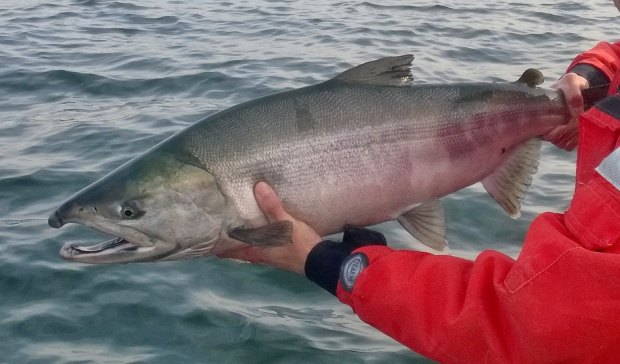
By Mark Yuasa
Normally this is a moment in time when chum salmon anglers are in the heat of the action around southern Puget Sound and Hood Canal, but this season has been a washout.
Since earlier this month, popular chum areas like the Hoodsport Hatchery fishing zone in Hood Canal closed to all fishing through Nov. 30, and could be extended as chum returns are falling below expectations.
“Since our commercial fleet is not on the water, our insight at this point is limited to hatchery returns and escapements,” said Mickey Agha, a Washington Department of Fish and Wildlife (WDFW) biologist. “Based on the current status of the run, the chance of reopening is likely low, but we will keep everyone updated as more fish hit the hatcheries.”
Agha said the Hoodsport Hatchery is at 42.2 percent of the egg take goal and McKernan Hatchery in Shelton is at 59.5 percent.
“This is a big jump from past weeks, but the (hatchery egg) take is still slow and we’re still in conservation mode,” Agha said.
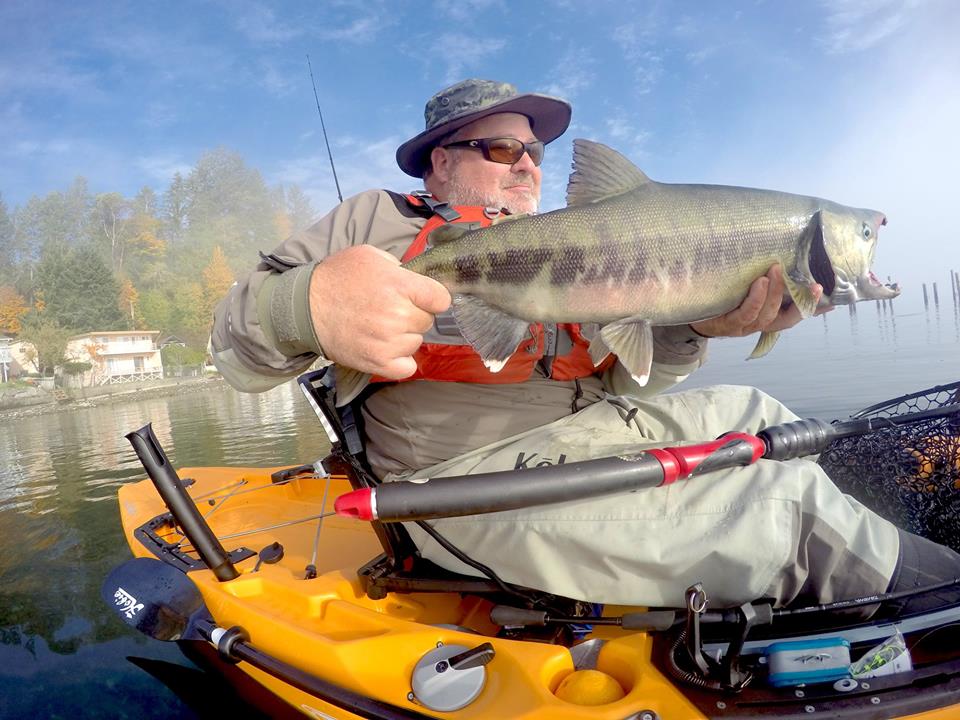
Prior to the closure, the Apple Cove Point test-net fishery in Puget Sound indicated that the South Puget Sound chum run size is coming in slightly below forecast based on an in-season population estimation model.
“While we did see an uptick in test catch during (Oct. 22-29), the catch per unit effort suddenly fell flat to 2019 levels in weeks (from Oct. 29-Nov. 13),” Agha said. “The return this year has been rather poor.”
Chum – also known as dog salmon for their ferocious-looking jawline at spawning time – are one of the hardest-fighting fish when hooked, and they’re the last of all migrating salmon returns to Puget Sound and Hood Canal.
The entire combined forecast was supposed to be 874,307 fall chum for Puget Sound and Hood Canal, which is up from 642,740 in 2019. In Hood Canal alone the chum forecast was supposed to be a decent 471,810, which is close to the recent historical annual average although for now it appears it’ll likely fall well short.
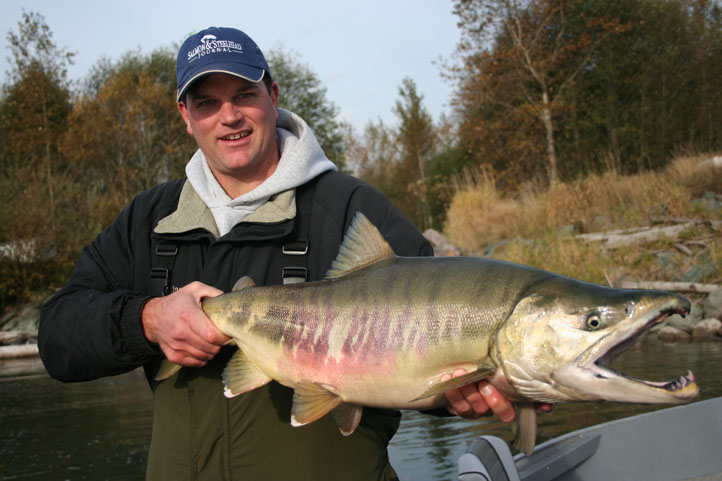
Central Puget Sound (Marine Catch Area 10) just closed on Nov. 15 for salmon fishing (reopens Jan. 1-March 31 for hatchery chinook and coho). Southern Puget Sound (Area 13) is open year-round for chum and hatchery chinook and coho. Hood Canal (Area 12) not including Hoodsport is open through Nov. 30 (release chinook).
All non-treaty commercial fisheries in central and south-central Puget Sound (Areas 10 and 11) are closed for this year since the test fishery found a low abundance of chum. In Hood Canal, the non-treaty commercials opened during the fist-half of the season but have since then shut down.
For comparison, by Nov. 5 in 2019 the non-treaty commercial fisheries in Marine Areas 12/12B had a catch of 94,600 at which time it was closed for conservation needs. This year by Oct. 27, the fleet had caught 53,500, and was then closed early to meet conservation needs.
“That’s an approximate 43 percent drop in total (non-treaty) commercial catch from 2019, a year in which Hood Canal experienced the worst run size in over two decades,” Agha said.
As for North Puget Sound fisheries, Agha says, in Marine Areas 7/7A the non-treaty commercial fisheries caught 46,820 chum and in Marine Areas 7B/C they caught 2,000. These catches were moderate to low in comparison to previous years. However, due to a strong concern about meeting escapement goals in the Nooksack, WDFW decided closing the North Puget Sound commercial fisheries as well two weeks ago.
Sport anglers who’d still like to pursue chum in Hood Canal can try along the public-access shores just off Highway 101 from Eldon south to Potlatch State Park (except for the Hoodsport Hatchery fishing zone); and Eagle Creek south of Potlatch State Park.
In southern Puget Sound chum catches have been modest at best at Fox Island south to Anderson Island; Kennedy Creek estuary in Totten Inlet; Johns Creek estuary in Oakland Bay; and Chico Creek estuary in Dyes Inlet.
A check from the Kennedy Creek estuary showed three boats with three anglers Nov. 20 with three chum, and four boats with six anglers Nov. 19 caught six chum; and McClane Creek estuary had four boats with seven anglers Nov. 20 with no chum; and
Many marine and estuary waterways are now closed to salmon fishing to protect weak returning salmon stocks so be sure to check the WDFW rules pamphlet or website – https://wdfw.wa.gov/ – for what types of fish you can or cannot keep.
Word on razor clams
Hope is fading fast that razor clam fans will be able to hit the coastal beaches for the upcoming holiday periods (including the now cancelled Dec. 1-4 digs) as the latest marine toxin testing levels have dropped but still remain well above the cut-off threshold.
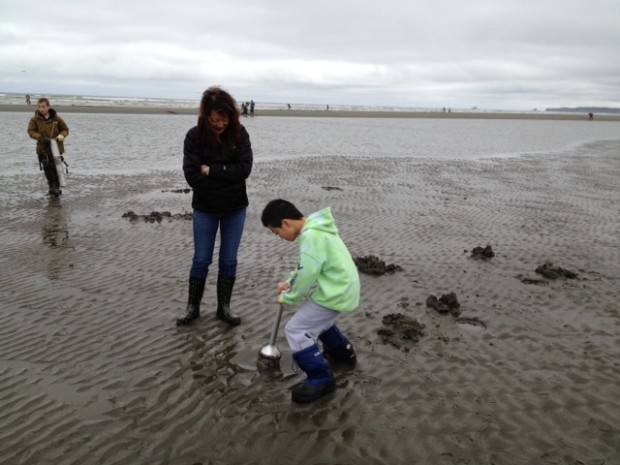
“While levels remain too high for safe consumption, those levels have declined since the last test, and we hope to see that trend continue to the point where we can open,” said Dan Ayres, the head WDFW coastal shellfish manager.
The Washington Department of Health (DOH) requires WDFW to regularly collect test samples from beaches and must test under the action level – 20 parts per million (ppm) for domoic acid; 80 µg/100g for paralytic shellfish poisoning (PSP); and 16 µg/100g for diarrhetic shellfish poisoning (DSP) – on both of two required sample collections, that must be spaced 7 to 10 days apart.
The latest test samples from Nov. 16 were: Long Beach, domoic acid level was 62 ppm; Twin Harbors, 46 ppm; Copalis, 44 ppm; and Mocrocks, 44 ppm. No PSP or DSP was detected on all beaches sampled.
These results and the historical record of domoic acid events can be found at https://wdfw.wa.gov/fishing/basics/domoic-acid/levels.
WDFW closely monitors marine toxins such as domoic acid – a natural toxin produced by certain types of marine algae – which can be harmful or even fatal if consumed in enough quantities. The cut-off threshold for domoic acid is 20 ppm.
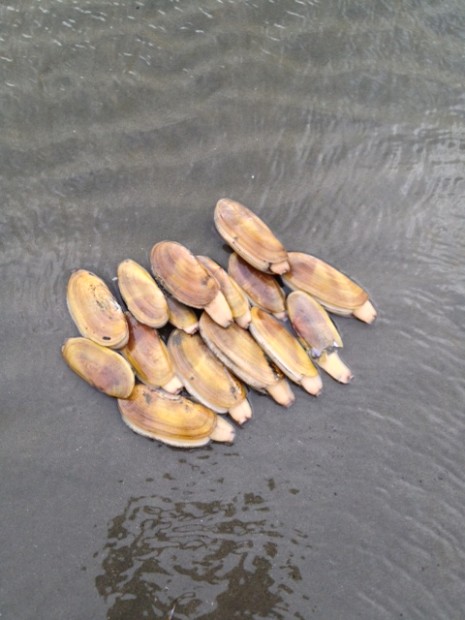
Since 1991, when the toxin was first detected on the Pacific Coast, outbreaks of domoic acid have prompted the cancellation of three entire razor-clam seasons in Washington — the last one in 2002-03.
Twin Harbors Beach never opened in 2015-2016 as marine toxin levels never dipped below the action level. The entire coast was also closed in late May of 2015 when domoic acid spiked well above the cut-off level.
Other remaining tentative dates during evening low tides are: Dec. 13, 15, 17, 28 and 30 at Long Beach, Twin Harbors and Copalis; and Dec. 12, 14, 16, 18, 29 and 31 at Long Beach, Twin Harbors and Mocrocks. Prior to the closure, 39 digging dates were scheduled from Sept. 14 through Dec. 31. If toxin levels recede, WDFW plans to set additional dates from January and possibly into May or shortly thereafter.
Digs that occurred Oct. 17-20 saw a near record turnout as people looked for ways to get outdoors while still following rules under the social distancing guidelines.
Long Beach, Twin Harbors and Copalis had 25,390 diggers Oct. 17 with 324,107 clams for a 12.7 per person average; and 2,750 on Oct. 19 with 41,251 for 15.0. At Long Beach, Twin Harbors and Mocrocks it was 7,716 on Oct. 18 with 115,745 for 15.0; and 1,781 with 26,728 on Oct. 20 15.0.
A day-by-day breakdown – Long Beach: 10,126 diggers on Oct. 17 had 151,902 clams; 3,111 on Oct. 18 had 46,665; 1,048 on Oct. 19 had 15,726; and 718 on Oct. 20 had 10,776. Twin Harbors: 5,583 on Oct. 17 had 83,754; 1,758 on Oct. 18 had 26,370; 604 on Oct. 19 had 9,071; and 406 on Oct. 20 had 6,090. Copalis: 10,126 on Oct. 17 had 151,902; and 1,096 Oct. 19 had 16,452. Mocrocks: 2,847 on Oct. 18 had 151,902; 657 on Oct. 20 had 9,861.
Once clams are deemed safe to consume, public health officials and coastal community leaders will closely monitor the incidence of COVID-19, and WDFW will rely on their guidance when making in-season adjustments to the schedule if necessary, to reduce public health risks.
Razor clam digging is a huge money maker generating $25- to $35-million for small coastal communities who rely on these opportunities during the lean tourist times in autumn, winter and spring to help boost their economy.
“This isn’t something you can fight out in the courts and domoic acid numbers are what they are,” Ayres said in an earlier story. “All we can do for now is hope that we can salvage some parts of what had been a great season.”
A bit of good news, Ayres pointed out, is places like Copalis and Mocrocks had oodles of little juvenile clams, which hopefully bodes very well for the future.
For details, go to http://wdfw.wa.gov/fishing/shellfish/razorclams/.

